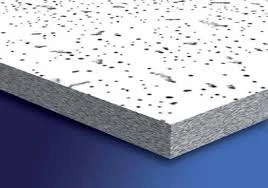Dec . 15, 2024 13:53 Back to list
Designing Functional and Aesthetic Ceiling Access Panels for Modern Spaces
Ceiling Access Panel Design Ensuring Functionality and Aesthetics
In modern architecture and construction, the design of ceiling access panels plays a crucial role in maintaining both the functionality of a building's infrastructure and the overall aesthetic appeal of the interior space. Ceiling access panels are essential components that provide access to concealed utilities such as electrical wiring, plumbing, and HVAC systems while ensuring that the visual integrity of the ceiling is preserved.
Importance of Ceiling Access Panels
When designing a ceiling access panel, it is vital to consider its functional purpose. These panels allow maintenance personnel to reach essential systems without causing extensive damage to the ceiling structure. This access is critical in commercial buildings, hospitals, and educational institutions where regular maintenance is required for safety and efficiency.
Moreover, ceiling access panels contribute to the longevity of building systems. By facilitating easy access, they help in prompt repairs and inspections, which can prevent minor issues from escalating into costly problems. In essence, incorporating well-designed access panels can lead to significant savings over time.
Design Considerations
The design of ceiling access panels requires a balanced approach that considers functionality, safety, and aesthetic compatibility with the surrounding environment. Here are several key aspects to consider during the design process
1. Material Selection The choice of materials for ceiling access panels significantly impacts their durability and visibility. Common materials include metal, PVC, and gypsum board. Metal panels are typically more robust and resistant to wear, making them suitable for high-traffic areas. In contrast, gypsum panels can blend seamlessly with drywall ceilings, offering a more discreet appearance.
ceiling access panel design

2. Panel Size and Shape Access panels come in various sizes and shapes to accommodate different applications and infrastructure needs. Standard sizes, such as 12x12 inches or 24x24 inches, are commonly used, but custom sizes can be designed to fit specific requirements. The shape of the panel should also be considered; square or rectangular panels are the most commonly used, but circular designs might be more appropriate for specific architectural styles.
3. Installation Methods The ease of installation is another crucial factor. Access panels should be designed for simple installation without extensive modification of existing ceiling materials. Featuring a lightweight construction and easy-to-use locking mechanisms can facilitate a hassle-free installation process.
4. Safety Features Safety is paramount in access panel design, particularly in commercial settings. Panels should be adequately secured to prevent accidental falls or unauthorized access to electrical and plumbing systems. Additionally, features such as fire-rated panels can provide added safety by preventing the spread of fire through concealed spaces.
5. Aesthetic Integration While functionality is essential, the aesthetic aspect of ceiling access panels cannot be overlooked. Panels should blend harmoniously with the ceiling design, ensuring that they do not detract from the overall look of the space. Custom finishes, textures, and colors can help achieve visual integration. Some panels are designed to be painted or laminated, allowing designers to match them with the surrounding ceiling materials.
Innovative Technology in Access Panel Design
In recent years, technology has influenced access panel design significantly. Innovations such as magnetic closures and remote locking mechanisms are making panels easier to access and safer to use. Additionally, smart access panels equipped with sensors can alert maintenance staff regarding the condition of underlying systems, integrating seamlessly into smart building technologies.
Conclusion
The design of ceiling access panels is an essential aspect of modern building projects, blending practicality with aesthetic needs. By focusing on functionality, material selection, safety features, and aesthetic integration, architects and builders can create access panels that not only serve their vital purpose but also contribute positively to the overall design of the interior space. As technology continues to advance, the possibilities for innovation in access panel design will only expand, providing even more efficient and effective solutions for building maintenance.
-
Durable Ceiling T Grid Systems | Easy InstallationNewsAug.29,2025
-
PVC Gypsum Ceiling: Durable, Laminated Tiles for Modern SpacesNewsAug.28,2025
-
Pvc Gypsum Ceiling Is DurableNewsAug.21,2025
-
Mineral Fiber Board Is DurableNewsAug.21,2025
-
Ceiling Tile Clip Reusable DesignNewsAug.21,2025
-
Ceiling T Grid Modular DesignNewsAug.21,2025







